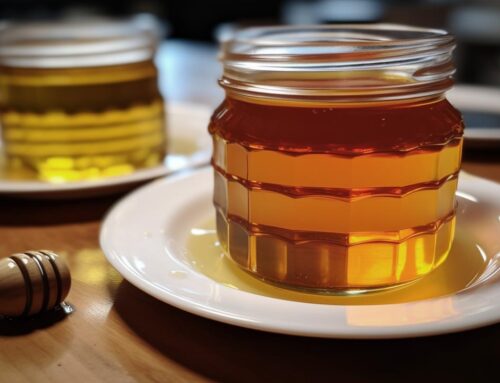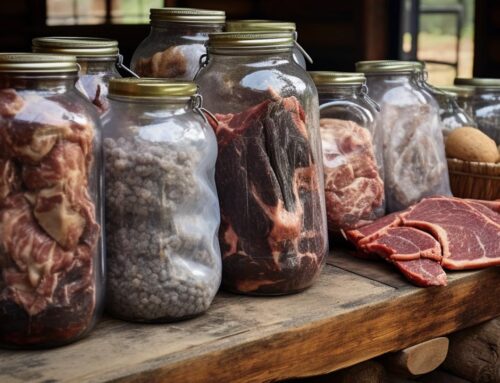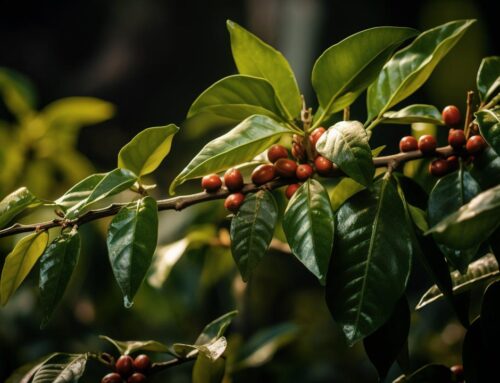October is a month of transition. As the summer heat fades and the cool embrace of autumn sets in, gardeners around the world prepare their soil for a new set of crops. This article delves deep into the world of vegetable gardening in October, shedding light on the best crops to plant during this month. Whether you’re a seasoned gardener or a newbie looking to dip your toes into the world of horticulture, this guide will provide you with a comprehensive understanding of the vegetable crops best suited for October planting. From their growth patterns to their nutritional benefits, we’ve got you covered. Let’s embark on this green journey together!
Vegetable Crops I’m Growing in October
Table of Contents
Why October?
October is a unique month for gardening. The moderate temperatures, combined with the right amount of rainfall, create an ideal environment for several vegetable crops. Moreover, the soil, having been enriched by the summer crops, is now packed with nutrients essential for the growth of autumn vegetables. The decreasing daylight also plays a role in ensuring that the crops don’t bolt too quickly, allowing them to mature at the right pace.
Top 5 Vegetable Crops for October
Planting the following crops in October not only ensures a bountiful harvest but also provides gardeners with fresh, nutrient-rich produce right from their backyard.
1. Broccoli
Botanical Background
Broccoli, scientifically known as Brassica oleracea var. italica, belongs to the Brassicaceae family, which also includes other vegetables like cabbage, cauliflower, and Brussels sprouts. Originating from the Mediterranean, broccoli has been cultivated for over 2,000 years and has become a staple in diets worldwide.

Cultivation Requirements
- Soil: Broccoli prefers well-draining, loamy soil with a pH level between 6.0 to 7.5. Enriching the soil with compost or organic matter can enhance its fertility and support robust broccoli growth.
- Temperature: Broccoli is a cool-season crop, thriving in temperatures between 65°F to 75°F (18°C to 24°C). While it can tolerate light frosts, extremely cold conditions can hamper its growth.
- Watering: Regular and consistent watering is crucial. The soil should remain moist but not waterlogged. Drip irrigation or soaker hoses can be beneficial in maintaining consistent moisture levels.
- Spacing: When planting, it’s advisable to space the plants about 12-24 inches apart, allowing them ample room to grow.
Health Benefits
- Nutrient-Rich: Broccoli is a powerhouse of nutrients. It’s rich in vitamins C, K, and A, as well as dietary fiber, potassium, and folate.
- Antioxidant Properties: It contains compounds like sulforaphane, which have potent antioxidant properties that can combat oxidative stress in the body.
- Cancer Prevention: Studies have suggested that the compounds in broccoli can help reduce the risk of certain cancers, including breast and lung cancer.
- Bone Health: The high vitamin K content in broccoli plays a vital role in bone health, aiding in calcium absorption and bone mineralization.
- Digestive Health: Being rich in fiber, broccoli aids in digestion and promotes a healthy gut.
Culinary Uses
- Versatility: Broccoli is incredibly versatile in the kitchen. It can be steamed, boiled, roasted, stir-fried, or even eaten raw in salads.
- Complementary Flavors: It pairs well with a variety of ingredients, including garlic, cheese, lemon, and almonds.
- Dishes: Popular dishes featuring broccoli include broccoli-cheese soup, broccoli salad, beef and broccoli stir-fry, and broccoli casserole.
- Storage: Fresh broccoli can be stored in the refrigerator for up to a week. For longer storage, it can be blanched and frozen.
2. Kale
Botanical Background
Kale, known scientifically as Brassica oleracea Acephala Group, is a leafy green vegetable that belongs to the cabbage family, Brassicaceae. This family also includes broccoli, Brussels sprouts, and cauliflower. Kale has been cultivated for over 2,000 years, with its origins tracing back to ancient Greece and Rome.

Cultivation Requirements
- Soil: Kale thrives in well-draining, fertile soil with a pH level of 6.0 to 7.5. Amending the soil with compost or well-rotted manure can boost its nutrient content, promoting healthier kale plants.
- Temperature: As a cold-hardy vegetable, kale prefers cooler temperatures, ideally between 60°F to 75°F (15°C to 24°C). It can tolerate frost, and in fact, a touch of frost can enhance its flavor by sweetening the leaves.
- Watering: Kale requires consistent moisture. While it’s drought-tolerant to some extent, regular watering ensures tender and flavorful leaves.
- Spacing: When planting kale, seedlings should be spaced about 12-18 inches apart to allow for ample growth.
Health Benefits
- Nutrient Density: Kale is often termed a “superfood” due to its impressive nutrient profile. It’s packed with vitamins A, K, C, and B6, as well as minerals like manganese, calcium, and potassium.
- Antioxidant Properties: Kale contains powerful antioxidants like quercetin and kaempferol, which combat oxidative stress and reduce the risk of chronic diseases.
- Heart Health: The fiber, potassium, and vitamin K in kale support heart health. Regular consumption can help lower cholesterol and reduce the risk of heart disease.
- Bone Health: The high vitamin K content in kale is essential for bone health, promoting bone density and reducing the risk of osteoporosis.
- Anti-inflammatory: Kale has omega-3 fatty acids, which are known for their anti-inflammatory effects.
Culinary Uses
- Versatility: Kale can be consumed raw, sautéed, boiled, steamed, or even baked into crispy chips.
- Flavor Pairings: It pairs beautifully with a range of ingredients, from garlic and onions to fruits like apple and cranberries.
- Dishes: Popular dishes featuring kale include kale salads, kale smoothies, sautéed kale with garlic, and kale soups.
- Storage: Fresh kale can be stored in the refrigerator for about a week. For extended storage, it can be blanched and frozen.
3. Spinach
Botanical Background
Spinach, scientifically known as Spinacia oleracea, is a leafy green flowering plant native to central and western Asia. It belongs to the Amaranthaceae family. Its leaves are a common edible vegetable consumed both fresh and cooked.

Cultivation Requirements
- Soil: Spinach prefers a well-draining soil with a pH level of 6.0 to 7.5. The soil should be rich in organic matter, so amending with compost or rotted manure can be beneficial.
- Temperature: Spinach is a cool-season crop, thriving in temperatures between 50°F to 75°F (10°C to 24°C). It can germinate in temperatures as low as 40°F (4°C).
- Watering: Consistent moisture is crucial for spinach. The soil should be kept moist but not soggy. Overwatering can lead to root rot, while underwatering can lead to bolting.
- Spacing: When sowing spinach seeds, they should be spaced about 2-3 inches apart. Once the seedlings emerge, thin them to 6 inches apart to allow for proper growth.
Health Benefits
- Rich in Nutrients: Spinach is loaded with vitamins and minerals, including vitamins A, C, K, iron, calcium, and magnesium.
- Eye Health: It contains lutein and zeaxanthin, antioxidants that are beneficial for eye health and can reduce the risk of age-related macular degeneration.
- Bone Health: The vitamin K in spinach plays a crucial role in bone health, aiding in bone mineralization and reducing the risk of osteoporosis.
- Heart Health: The high levels of nitrates in spinach can help regulate blood pressure and improve heart health.
- Anti-cancer Properties: Spinach contains compounds like quercetin and kaempferol, which have been studied for their potential anti-cancer effects.
Culinary Uses
- Versatility: Spinach is incredibly versatile in the kitchen. It can be eaten raw in salads, cooked in soups and stews, sautéed, or even blended into smoothies.
- Flavor Pairings: Spinach pairs well with a variety of ingredients, including garlic, olive oil, lemon, nuts, cheese, and eggs.
- Dishes: Some popular dishes featuring spinach include spinach and ricotta stuffed pasta, spinach and feta pie, creamed spinach, and spinach smoothies.
- Storage: Fresh spinach can be stored in the refrigerator for about a week. For longer storage, blanching and freezing is recommended.
4. Radishes
Botanical Background
Radishes, scientifically known as Raphanus sativus, belong to the Brassicaceae family. They are believed to have originated in Southeast Asia and have been cultivated for thousands of years.

Cultivation Requirements
- Soil: Radishes prefer loose, well-draining soil. Sandy loam is ideal as it allows the roots to expand easily.
- Temperature: Being a cool-season crop, radishes thrive in temperatures ranging from 50°F to 65°F (10°C to 18°C).
- Watering: They require consistent moisture. Watering should be regular but moderate to prevent splitting.
- Spacing: Seeds should be sown about 1 inch apart, and once the seedlings emerge, they can be thinned to about 2 inches apart.
Health Benefits
- Digestive Health: Radishes are a good source of dietary fiber, which aids in digestion.
- Vitamin C: They are rich in vitamin C, an antioxidant that boosts the immune system and skin health.
- Detoxification: Radishes have been known to support liver function and can aid in detoxification.
- Hydration: High in water content, radishes can help keep the body hydrated.
Culinary Uses
- Versatility: Radishes can be consumed raw, pickled, roasted, or even used in salads and garnishes.
- Flavor: They have a crisp texture with a peppery and slightly sweet taste.
- Dishes: Common dishes include radish salads, pickled radishes, and radish slaw.
- Storage: Fresh radishes can be stored in the refrigerator for up to a week. The greens, if fresh, can be used in salads but perish faster than the roots.
5. Peas
Botanical Background
Peas, known scientifically as Pisum sativum, are part of the legume family. They have been cultivated for over 7,000 years and are believed to have originated in the Middle East.

Cultivation Requirements
- Soil: Peas prefer well-draining soil with a pH level of 6.0 to 7.5.
- Temperature: They are a cool-season crop, thriving in temperatures of 55°F to 70°F (13°C to 21°C).
- Watering: Peas need consistent moisture, especially during flowering and pod formation.
- Spacing: Seeds should be sown about 2 inches apart, with rows spaced about 18 inches apart.
Health Benefits
- Protein: Peas are a good source of plant-based protein.
- Fiber: They are rich in dietary fiber, which aids in digestion and promotes gut health.
- Vitamins & Minerals: Peas are packed with vitamins A, C, and K, as well as minerals like iron and manganese.
- Heart Health: The presence of antioxidants and anti-inflammatory compounds can support heart health.
Culinary Uses
- Versatility: Peas can be boiled, steamed, stir-fried, or even eaten raw.
- Flavor Pairings: They pair well with mint, butter, cheese, and various herbs.
- Dishes: Popular dishes include pea soup, pea and ham risotto, and pea puree.
- Storage: Fresh peas can be stored in the refrigerator for a few days. For longer storage, blanching and freezing are recommended.
Frequently Asked Questions
Final Thoughts
October presents a golden opportunity for gardeners to plant a variety of nutrient-rich vegetables. The moderate climate, combined with nutrient-packed soil, ensures that the crops grow healthily and yield a bountiful harvest. Among the top crops for October, broccoli and kale stand out not just for their nutritional benefits but also for their resilience in the face of changing weather. As we wrap up this guide, the most crucial takeaway is the importance of understanding the seasonal needs of crops and planting accordingly. Happy gardening!
Sources
- Broccoli Nutrition and Health Benefits
- Kale: Nutrition, Types, Cooking, and More
- Spinach: Health Benefits, Uses, Precaution
- Radishes: Nutritional Value, Benefits & Recipes
- Peas: Health Benefits, Nutritional Information







Leave A Comment